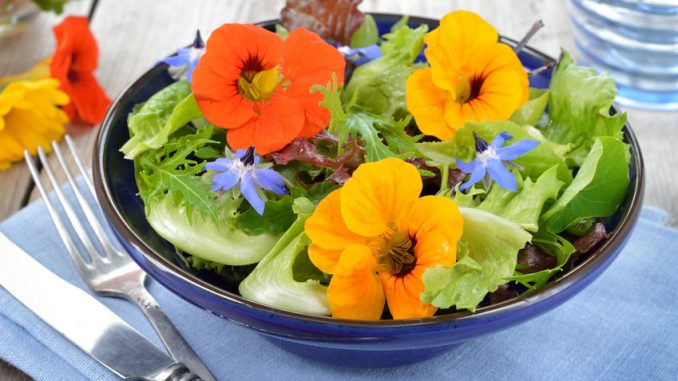
Edible flowers are a fun and easy way to add colour, flavour and texture to both sweet and savoury dishes — especially when you can pick them straight from your garden. There is also some evidence that they also have health benefits
Why not try a few petals to zing up a salad, pep up a soup, or decorate a cake? They could make a great addition to your favourite summer cocktail and will certainly add a touch of individuality to your culinary endeavours!
Edible flowers have a long history. The Chinese were probably the first to experiment with adding flowers to their dishes, with recipes that can be traced back as far as 3,000 BCE. The Romans used lavender, violets and pinks widely in their cooking and their use here in the UK became very popular during Victorian times.
There are a wide range of annuals and perennials with edible flowers that you can grow in your garden. Easy to cultivate, they are also a great way to encourage children to take an active interest in wildlife and growing and preparing food.
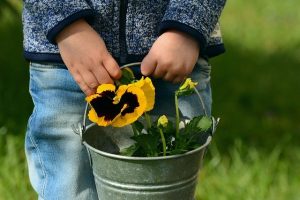
Are all Flowers Edible?
The simple answer is NO! There are some important things to consider before you eat flowers:
- Not every flower is edible. In fact, some flowers can be poisonous. Only eat flowers from plants on this RHS list. Identifying plants accurately is essential – if you are in any doubt, don’t eat!
- People with severe allergies, especially to pollen, should avoid eating flowers.
- Grow your flowers organically – avoid spraying with any insecticide, fungicide or herbicide. There are no products on the market that are specifically approved for use by gardeners on edible flower crops.
- Do not eat shop bought flowers unless they are labelled for culinary purposes. They are often sprayed with chemicals to extend their shelf life.
- If you are foraging for edible flowers, don’t pick faded or dusty flowers from roadsides and avoid picking flowers from areas frequented by dog walkers or livestock.
Remember, flowers provide an important source of nectar or pollen for bees and other insects, so don’t pick them all.. Share your blooms!
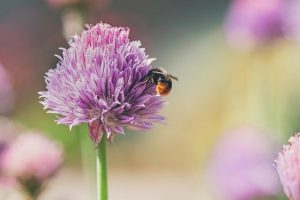
What are The Best Ways to Use Edible Flowers?
Most edible flowers are best eaten raw; their subtle flavours and colours are destroyed by heat.
They will taste and look their best right after they have opened, so pick young flowers and buds in the morning before the sun’s too strong, and preferably when it’s dry. This will ensure that the colour and flavours are at their most intense.
For the best colour and flavour, use your flowers on the day they are picked. They can be stored in a plastic bag in the fridge for a couple of days if your are going to cook them. Flowers preserved by freezing in ice cubes are great for adding to summer cocktails.
Generally, only the petals are eaten. With large flowers ( such as Rose and Day Lily) it’s worth removing the bitter ‘heel’ at the base of the petal.
Don’t forget to look after your bees and small pollinating insects as you harvest – give flowers a good shake as soon as you have picked them to encourage insects to leave.
Clean flowers ready for eating by dipping them in a bowl of cold salt water and drying on a paper towel.
Our Top Ten Tasty Blooms
We have selected our ‘Top 10’ based on two criteria. They have to be loved by pollinating insects and be delicious for us humans too.
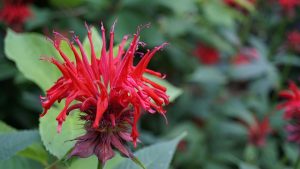
Bergamot/Bee Balm (Monarda didyma)
As well as being colourful, the flower petals have a sweet, spicy flavour and aroma. Before using the flowers only give them a short rinse in cold water so that you don’t diminish their fragrance.
They are a great addition to salads and go well with poultry and bacon dishes. Try adding bergamot to the stuffing for your Sunday roast for added interest.
Fresh or dried bergamot leaves make a delicious tea.
A summer flowering herbaceous perennial, bergamot is irresistible to bees and butterflies. It will tolerate light shade, but prefers to be planted in full sun on well-drained soil. If you get the position right it will come back year after year and provide you with delicious aromatic flowers all summer long. A firm favourite with us!

Borage (Borago offincinalis)
The petals of these pretty star-shaped blue flowers have a cucumber flavour and the stamens add a hint of sweetness. The flavour is best if you pick the flowers when they have just fully opened.
They work well mixed into green and fruit salads and are a popular addition to summer drinks, particularly Pimms. They crystallise well and provide attractive cake decorations. The flowers freeze well in ice cubes, so you can add them to cocktails all year round.
The cucumber-flavoured leaves can also be eaten. They should be harvested when young and used fresh, in salads and soups.
Borage will grow abundantly once established, but needs to be eaten in moderation as it acts as a diuretic. Avoid borage flowers of you pregnant or breast feeding.
Borage will thrive in any sunny spot as long as the soil is well-drained. The flowers are very attractive to bees, so it’s a useful plant to grow near your veg plot to entice more insects to pollinate your crops.
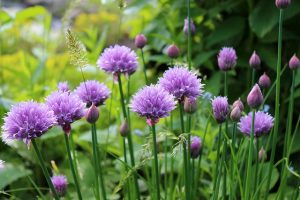
Chives (Allium schoenoprasum)
Chive flowers have a mild onion flavour and are surprisingly crunchy. They are widely used in salads and are good sprinkled over pasta dishes. They work well with eggs and are delicious scattered over an omelette or scrambled eggs. Add a few to white fish dishes or a cheese sauce to give it an extra bite.
Chives are easy to grow, even if you only have a windowsill. The flowers are loved by bees! They are perennial, so once you have them in your garden they will come back year after year.
They do best in fertile, well-drained soil in sun or partial shade. Pot-grown chives will need dividing and repotting every couple of years
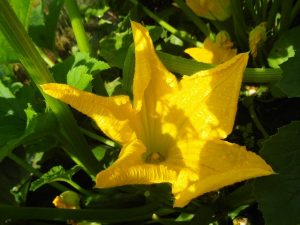
Courgette, squash, marrow and pumpkin (Cucurbita spp)
These large yellow flowers have a slightly sweet ‘nectar’ flavour and there are lots of ways to use them in your kitchen.
Only use male flowers so as not to reduce crop yield (unless you’re suffering from a glut!)
Thinly sliced or shredded blooms can be added to soups, omelettes or used to add colour to salads. Alternatively you can soften the shredded flowers in oil and add to pancake batter, a tortilla filling or pasta.
All Cucurbita flowers can be coated in batter and deep fried. These are delicious eaten hot in a tomato sauce. They can be stuffed with cheeses and other fillings (mozzarella cheese is particularly delicious!) then steamed or baked. They can also be eaten cold, stuffed with cheese, cooked rice, nuts or meat.
They grow best in a rich soil in full sun. Start seeds indoors in spring, then plant out when the soil is warm and there is no danger of frost.
Buy your courgette and squash seeds here
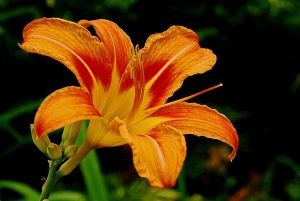
Day Lily (Hemerocallis)
It is important that you don’t confused day lilies (Hemerocallis) with other types of lilies.
Don’t eat shop bought lilies or other types of lily (Lilium) in your garden. They are poisonous!
There are lots of different hybrids of Hemerocallis. Each hybrid has different coloured flowers which appear each day.
They all look great in the garden, and pollinators love them, but if you are growing them to eat, avoid the hybrids with darker flowers. These tend to leave an unpleasant aftertaste.
The hybrids with lighter coloured flower are sweeter with a flavour similar to asparagus or green beans.
Add buds and flowers to stir fries, salads and soups. Petals can also be used to decorate salad.
Day lilies are herbaceous perennials and very easy to grow. They grow well in partial shade, but they will give the best flowers if grown in reasonable soil in full sun.
Buy your Hemerocallis plants and seeds here
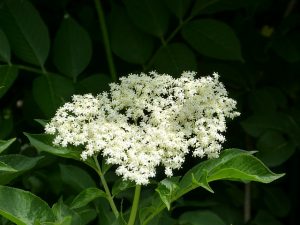
Elderflower (Sambucus nigra)
The flowerheads and berries are used to make wine, champagne and cordials. Dark-leaved elders sometimes have pink flowers, which retain their colour, producing very attractive drinks.
The flavour combines particularly well with gooseberries and makes delicious sorbet or ice-cream.
Elderflowers can also be dipped in batter and deep fried to make elderflower fritters – surprisingly delicious!
A hardy shrub, Elderflower will grow pretty much anywhere in your garden, except waterlogged sites.
When harvesting take care to only remove a third of the blooms each season. Over cropping will encourage the plant to flower a second time which will weaken the shrub over time. The berries also provide excellent food for birds, so make sure you leave plenty for them!
Buy your elderflower plants and seeds here
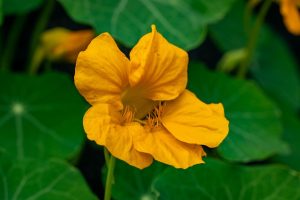
Nasturtium (Tropaeolum majus)
The leaves and flowers have a delicious spicy-peppery taste similar to watercress. The brightly coloured petals are an attractive and tasty addition to salads and pasta dishes. They can also be used as a garnish for steaks and burgers.
Easy to grow, they will thrive in any sunny spot in your garden or in a container.
If you are growing in a container, avoid using too much fertiliser otherwise you will encourage lots of leaves and few flowers.
Buy Your Nasturtium Seeds here
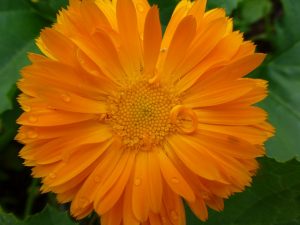
Pot Marigold (Calendula officinalis)
Calendula has been a staple in British cottage gardens for centuries. Historically they were grown for medicinal and culinary purposes.
The flowers have an intense colour and a slightly peppery taste. They add a light, tangy flavour to soups, stews and puddings as well as adding a touch of colour.
They make a bright and tasty addition to salads. Petals can be dried and used as an economical substitute for saffron, adding colour to rice, oil or butter.
It can be grown in containers or beds in full sun to partial shade, but the tasty flowers last longer in filtered sun or shady areas. Deadheading the old flowers will encourage reblooming and make sure you have a consistent supply from late spring until the first frosts.
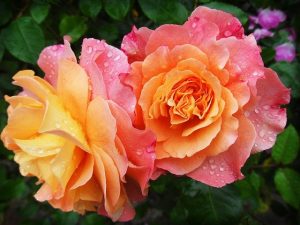
Rose (Rosa)
As a general rule if a rose smells good it will taste good. All roses are edible, but we have found that traditional, fragrant roses, such as Davis Austin roses, are the best.
Rose petals have a delicate flavour which improve fruit dishes, salads and cold summer drinks. It is best to remove the white heel from the base of the petal as these have a slightly bitter taste.
The petals can also be crystallized and make very attractive cake decorations.
Rosehips are packed with vitamin C and can be used to make jellies and cordials..

Sweet Violet (Viola odorata)
The flowers have a delicate lettuce-like flavour, suitable for sweet or savoury dishes. They make a decorative addition to green salads or a garnish for pâté or cold meats.
The attractive shaped blooms make them ideal for crystallising and using as decorations for cakes, creamy desserts and soufflés. They also look wonderful in summer cocktails.
Violas are easy to grow and prefer moist, well-drained soil, in partial shade. They will flower over a long period of time, if you deadhead spent blooms regularly.

Why not make sure your garden is filled with edible flowers this season?
The bees will love you for it and they will add and interesting and creative touch to your culinary endeavours.
Cheers!
Please note this page contains links to our affiliate marketing partners. Please read our affiliate disclosure.
Leave a Reply